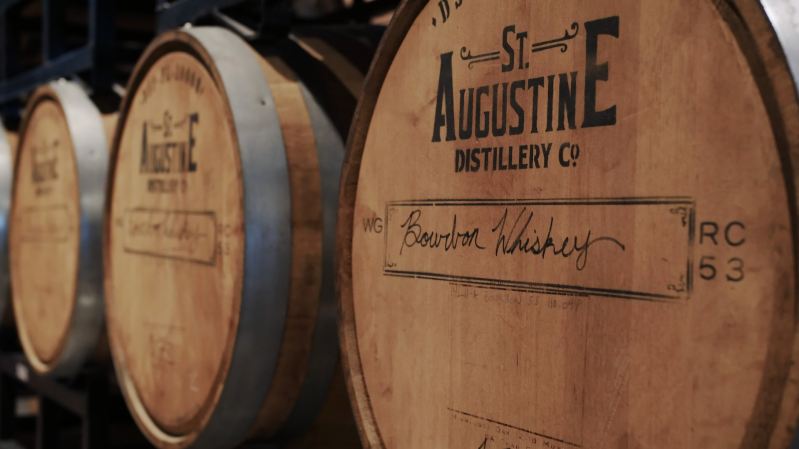
If you’ve ever looked into the process of making whiskey (specifically bourbon), you know that there are a lot of rules and regulations, but (on top of the ingredients themselves) there are few steps more important than the aging process. Equally invaluable is the actual wood the bourbon is matured in. While some distillers experiment with other woods for extra aging and finishing, white oak is the only acceptable barrel for straight bourbon. This is why it’s so discouraging to learn about a new report that says that whiskey makers are starting to run out of viable trees.
Something must be done quickly, or soon you might either not be able to get your hands on your favorite bourbon — or you’ll have to pay an uncomfortable amount to get it. You still don’t understand? Let’s start with a little refresher about what makes a bourbon.
How bourbon is made
While whiskey (spelled ‘whisky’ everywhere but the United States and Ireland) is made all over the world from Scotland to Taiwan and everywhere in between, you can only make bourbon in the U.S. America’s “native spirit” is also governed by a few unflinching rules and regulations.
To be considered a bourbon, first and foremost, it must be made in the U.S. It doesn’t, however, need to be made in Kentucky, regardless of what you might have heard. That being said, roughly 95% of all bourbon is still made in the Bluegrass State.
It also must be made from a mash bill of at least 51% corn (although many distillers lean much more heavily on the sweet flavor of corn and bring that percentage up). The rest of the grains are up to the distiller, with barley, rye, and wheat being popular choices.
Bourbon must be distilled to a maximum of 160 proof (80% alcohol by volume), barreled at a maximum of 125 proof (62.5% ABV), and bottled at a minimum of 80 proof (40% ABV) and a maximum of 150 proof (75% ABV).
But this brings us back to the problem at hand. Above all else, bourbon must be matured in new, charred American oak barrels. While all the other steps are important, it’s aging in charred oak that gives your favorite bourbon its memorable nose and palate of caramel, vanilla beans, dried fruits, spices, and oak.
It’s not bourbon without the oak. Even if you follow every other rule, you can’t label it as bourbon without maturing it for at least two years in charred oak. It’s as simple as that.
The problem with white oak trees
Sadly, this extremely important step in the bourbon-making process is in serious danger and has been going on for decades. This is because white oak, also known as Queras alba, isn’t doing so well. And while it’s bad for bourbon and other businesses that use white oak, we still don’t even know how bad just yet. You see, you can’t just plant a tree and then have it magically grown overnight, harvest the wood, and make barrels. Just like making whiskey itself, you have to wait for the trees to mature before they’re suitable to be cut down to be made into whiskey barrels and casks.
According to a group of researchers, industry insiders, and government agencies called The White Oak Initiative, while there are more than 100 million acres of white oak throughout the United States, around 75 percent of it is mature. And while that is all well and good for making whiskey barrels right now, it’s bad news for future whiskey makers.
According to the Initiative, competing species — like maple and beech — are primarily responsible for the lack of young white oak trees. Climate change, invasive insects, disease, and behavioral change also play a part.
If the numbers continue to decline, in a decade or so there might be real difficulty getting wood for bourbon barrels.
Luckily, there is hope for the future. Among other initiatives, the University of Kentucky announced in 2021 that it would create the largest repository of American white oak trees in collaboration with famed bourbon brand Maker’s Mark. First, they collected 300 families of white oak and began planting them at Maker’s Mark’s Star Hill Farm. Then they planted 1.700 trees, and then another 2,200 in 2022, before adding another 5,000 this past spring.
And Maker’s Mark isn’t the only one. Old Forester Distillery, Buffalo Trace, and more all have their own conservation plans in place. Here’s hoping they’re successful.



